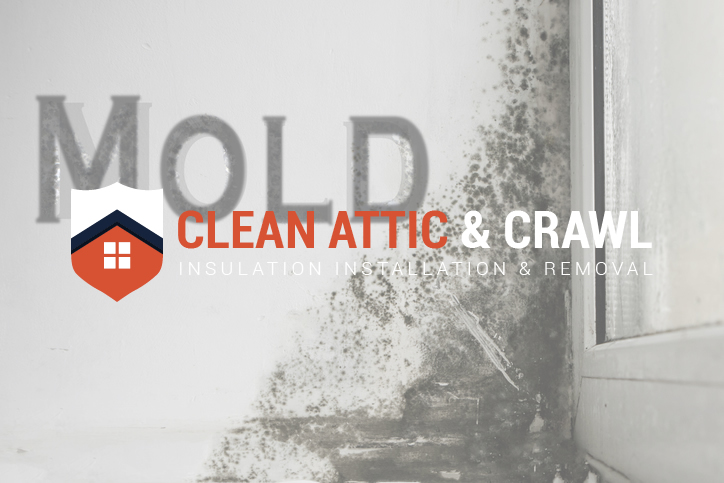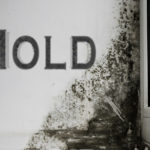The Ultimate Guide to Types of Mold
Have you discovered mold growing in your home? Are you thinking of ways to eliminate it? Before you start the elimination process, you need to know the types of mold, where they grow & how to kill it fast. Only then will you choose the best method to completely remove your mold type.
Helpful tips:
- HOW TO KILL MOLD IN YOUR CRAWL SPACE FAST
- I FOUND MOLD IN MY ATTIC! WHAT DO I DO?
- EASY GUIDE TO BUDGETING FOR ATTIC CLEANING COSTS

How many different types of mold are there?
There are numerous types of mold which are classified in various categories depending on their color and their toxicity.
Mold Types According to Health Effects
Here are the different types of molds according to the magnitude of their health effects.
Allergenic Molds
If you suffer from asthma or other allergies, you should be very afraid of allergenic molds. This is because they target people who are prone to allergies. Once this group of people is exposed to this mold types, they get a hypersensitive reaction. Here, excess mast cells will be activated which causes an escalated inflammatory response inside the respiratory system.
Studies suggest that between 20% and 30 % of the global population is prone to mold and various other allergens. This means that they can develop various reactions such as allergic rhinitis. The good news is that many people who aren’t prone to allergies won’t be affected by small doses of allergenic molds.
Toxic Molds
Toxic molds generate mycotoxins, dangerous chemicals which can cause destruction to your life. Unlike the pathogenic and allergenic molds however, you may want to know that toxic molds cause harm on other living things instead of presenting side effects.
Mycotoxins are said to be among the most fatal chemicals across the world and are formed in mold spores and mold. You can be vulnerable to mycotoxin through dermal exposure, ingestion, and inhalation. As a result, you’re likely to suffer from both long term illness or temporary irritation.
Pathogenic Molds
If you’re exposed to pathogenic molds, you’re highly likely to suffer from various diseases and infections. If you’re among the healthy people among the population who boast of a great immune system, your body will fight off pathogens. Still, you may want to know that pathogenic molds are quite dangerous to people with weak and compromised immune systems and this explains why pathogenic molds are defined as a selfish pathogen.
If you’ve got an infant, then you need to exercise more caution seeing that these mold types target the elderly and infants who are known to have weak immune systems.
Regardless of the type of mold, you’re trying to manage, you eliminate the problem with immediate effect before the problem escalates. If you’ve got mold in your home, it could be an indication of an existing moisture problem which if not addressed may cause more mold growth.
Keep yourself and your entire family protected from all types of mold by calling an expert who can inspect your surrounding and help you eliminate the problem.
The CDC (Center for Disease Control) suggests that toxic mold isn’t necessarily toxic by its own. However, the specific species is likely to generate mycotoxins which can be dangerous to your body.
What are the Popular Types of Toxic Mold?
Scientists suggest that there are more than 100,000 mold species, some of which generate dangerous chemicals while others are harmless. Here are some of the generally known toxic mold types.
Stachybotrys
If you haven’t heard of the Stachybotrys mold before, don’t be confused by the complex name as it refers to the black mold. This mold is one of the most toxic mold species found in the house. The mycotoxins that the black mold generates can cause bleeding in the lungs, a dangerous occurrence to both human beings and animals.
The major challenge with the black mold is the fact that detecting it is an arduous task. This mold grows beneath ceilings and walls and isn’t easily detected using ordinary air sampling.
Aspergillus
The Aspergillus molds are green and sometimes gray flecks which appear on wooden surfaces. You’ll be surprised to learn that there are approximately 20 species of the Aspergillus. This mold type is toxic and they’re bound to cause various allergies which may result in severe asthmatic reactions, lung infections, and hay fever.
The worst news about this mold type is that all its species generates mycotoxins which can be a health hazard to people with weak immune systems.
Memnoniella
The Memnoniella is another species of the black mold. This mold presents similar effects to the Stachybotrys. The only notable difference is that the Memnoniella dispenses its spores in chains while the Stachybotrys releases spores in clumps.
Alternaria
The Alternaria happens to be one of the most widespread fatal molds and there are numerous species of this mold type. If you’re exposed to this mold type, you may suffer from hay fever, asthma, and other allergy reactions.
Penicillium
There are numerous species of the Penicillium mold. Surprisingly, some of them are beneficial while the rest are fatal. It’ll surprise you to know that some Penicillium species are used in the production of medicine and cheese. Just like other molds, exposure to Penicillium causes allergies and the situation can escalate if you have a compromised immune system.
Geotrichum
The Geotrichum has a white color and has a powdery appearance. You may want to know that this mold type spreads very fast and is usually linked to severe health conditions such as pulmonary infections and tuberculosis.
The Geotrichum thrives in a temperate climate and moist conditions and its spores spread to different environments through the air. If you’re exposed to this mold type, you’ll experience fatigue, itchy eyes, and severe headaches.
Chaetomium
If your walls are dry and you think that you’re safe, you may want to think again. This is because the Chaetomium can be found on dry walls which have previously been destroyed by water. The spores of this mold have been associated with triggering autoimmune diseases, allergic reactions such as watery red eyes and breathing difficulties, and neurological damage.
You can recognize this mold type from its musty odor. The most confusing fact about this mold type is that it also thrives in various other areas such as dark and wet environments such as baseboards, under the carpets, and beneath wallpapers. Chaetomium is usually thought to be the black mold seeing that they share various similarities.
Trichoderma
The Trichoderma is white but has green patches. It’s an allergic mold which flourishes in moist areas and comes in a collection of five different subspecies. Many of these subspecies are non-pathogenic while some have been linked with pulmonary and liver infections. Beware that this mold type has a fatal enzyme which can damage various construction materials such as paper, textiles, and wood which can make buildings to collapse.
Bipolaris
In the beginning, Bipolaris is either gray or white in color. However, it slowly changes to dark olives with continued growth. It comes with a fluffy and soft appearance and grows outdoors on soil and grass. It’s not surprising to find this mold type in items that have been damaged by water such as houseplants, hardwood floors, and carpets.
The Bipolaris is among the rapidly growing molds and matures in a record 5 days. If you’re exposed to the Bipolaris, you’ll experience allergic reactions such as wheezing, asthma, coughing, and stuffy nose.
Fusarium
The Fusarium comes in various colors including white, red, and pink. One thing you need to know is that this mold type adapts to cold temperatures and often thrives on compost, food products, wallpaper, and carpets. If you’re exposed to this mold, you’ll suffer from different allergic reactions such as dermatitis, sore throat, running nose, and itchy eyes.
What’s more, prolonged exposure can cause severe conditions such as bone infections and ulcers in the brain. Remember, this mold type generates toxins which can be detrimental to the nervous system resulting in internal bleeding.
Ulocladium
The Ulocladium mold is black and you’ll most likely find it in wet areas such as kitchens, basements, and bathrooms. There are two subspecies of this mold type and they’re overly allergic.
You may want to know that this mold type is associated with serious allergic reactions and skin infections. If you inhale this mold for a prolonged period, you may suffer from asthma-related symptoms and suffer breathing complications.
Aureobasidium
Apart from being allergic, the Aureobasidium can cause eye, skin, and nail infections. It’s usually brown, pink, or black in color in its initial stages but changes to dark brown as it grows. The Aureobasidium thrives in water damaged and wet areas which is why you should ensure that all hidden areas in your home are well dried.
Ascospores
The Ascospores flourishes in water damaged places in the home and other wet substrates. This mold type falls among the overly resistant molds and can continue to survive whether you’ve dried all wet surfaces or not. The funniest fact is that this mold continues living until it can identify another ideal environment where it can grow with ease.
This type of mold is often found in laboratories where infected animals encourage its spread. There are various species of the Ascospores and they include; the Dermatophytes, which can damage keratin-based substances such as hair and the nails, and the Histoplasma capsulatum which is overly defiant to dry conditions.
Cladosporium
Don’t be surprised to learn that the Cladosporium can thrive in both warm and cold environments. Usually, it grows indoors under floorboards, fabrics, and carpets. It’s usually brown in color but can also be olive green complete with a suede texture.
If you’re exposed to the spores of this mold, you’re likely to experience various allergic reactions such as sore throat, running nose, skin infections, and itchy eyes.
Basidiospores
If you live in a humid, rainy, and windy area, then you could be exposed to the Basidiospores. This type of mold thrives outdoors in gardens, woodlands, and forests. You should also need to understand that it also thrives indoors albeit in rare cases especially in damp areas.
If you ever find this type of mold in your home, then chances are it found its way there through clothing, open windows and door, and pets. Exposure to the Basidiospores will leave you with various allergies such as hay fever, asthma, and Lycoperdonosis.
Types of Mold According to Color
If you don’t already know this, it’s worth noting that molds come in various colors. Perhaps the only mold you can identify is the black mold. You’ll be surprised to learn that there are different molds in almost any color you can think of. Below are some of them.
Black Mold
You must’ve heard about the black mold. This is a common term which defines mold species that are black, gray, or dark green in color. These mold species thrive in warm and moist areas such as showers, basements, kitchens, bathrooms, and toilets.
Yellow Mold
You’ll find the yellow mold on walls, food materials, wooden surfaces, bathrooms, walls, and tiles. This mold species is also popularly referred to as the slime mold and comes in yellow color with a bright slime appearance. An example of molds which are yellow in color include; Meruliporia, Serpulalacrymans, and Aspergillus.
Green Mold
The green mold is also common and chances are you’ve seen green mold. There are numerous species of the green mold which are known to cause severe health complications such as Cladosporium, Aspergillus, and Penicillium all of which are green in color mainly due to the components they feed on and the climate they thrive in.
Other helpful tips:
- EASY GUIDE TO CRAWL SPACE CLEANING REPAIRS
- DAMP PROOFING WITH VAPOR BARRIERS
- A SIMPLE SCHEDULE FOR CRAWL SPACE AND ATTIC MAINTENANCE
Finally
The above list is a clear indication that there are numerous common mold species all of which come with distinct characteristics. For instance, detecting some mold species can be an arduous task while cleaning and eliminating others is not easy. Still, you’ll need to establish the specific type of mold in your home. Remember, mold infestation can cause severe long term health complications. If you suspect mold infestation in your home, the best way to detect it is by calling in an expert mold inspector as they’re qualified to conduct mold tests appropriately.


